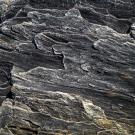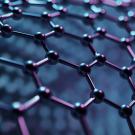What is Technological Carbon Sequestration?
Scientists are exploring new ways to remove and store carbon from the atmosphere using innovative technologies. Researchers are also starting to look beyond removal of carbon dioxide and are now looking at more ways it can be used as a resource.
Graphene production: The use of carbon dioxide as a raw material to produce graphene, a technological material. Graphene is used to create screens for smart phones and other tech devices. Graphene production is limited to specific industries but is an example of how carbon dioxide can be used as a resource and a solution in reducing emissions from the atmosphere.
Direct air capture (DAC): A means by which to capture carbon directly from the air using advanced technology plants. However, this process is energy intensive and expensive, ranging from $500-$800 per ton of carbon removed. While the techniques such as direct air capture can be effective, they are still too costly to implement on a mass scale.
Engineered molecules: Scientists are engineering molecules that can change shape by creating new kinds of compounds capable of singling out and capturing carbon dioxide from the air. The engineered molecules act as a filter, only attracting the element it was engineered to seek.
Types of Carbon Sequestration

Biological Carbon Sequestration

Geological Carbon Sequestration

Technological Carbon Sequestration